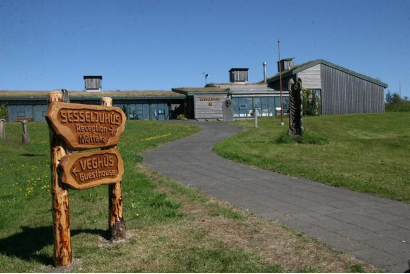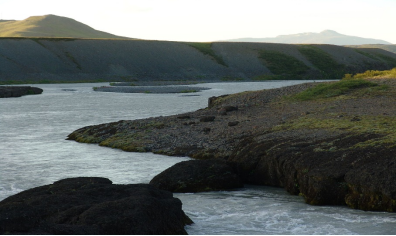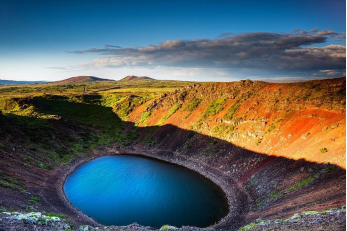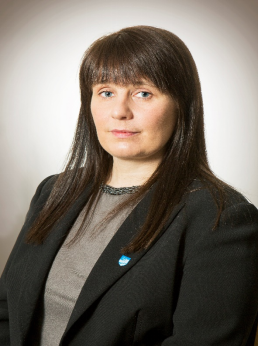Grímsnes- og Grafningshreppur 作者: 来源: 发布时间:2021-06-15
一、所属省或是州,具体位置,人口,面积
Grímsnes- og Grafningshreppur is a municipality in the middle of Árnessýsla within Iceland’s Southern Constituency. It came into being on June 1, 1998 with the merger of Grímsnes and Grafningshreppur. The municipalities two urban cores are Sólheimar and Borg. The district lies next to Bláskógabyggð, Hvítá and the Municipality of Ölfus.
The municipality has a total population of 497 making it the 50th largest municipality in Iceland by population, and the 31st largest in Iceland by area with a total area of 890.9 square kilometers.
二、自然地理
1.地理条件
Mountains and mountain ranges in the municipality: Hengillinn is 803m, Hrómundartindur is 561m, Ingólfsfjall is 551m, Búrfell is 534m, Thrasaborgir is 404m, Hrólfshólar is 333m, Hestfjall is 317m, Mosfell is 254m, Bíldsfell is 222m, and Seyðishólar is 210m.
Sogið is a 19 kilometer long spring that falls from Þingvallavatn. It is the largest water spring in the country with an average flow of 110 m³ / s. There is a lot of salmon and trout in the river, but it decreased significantly when Ljósafoss power station, the first of the river's three power plants, was built. The other power plants are Steingrímsstöð and Írafossstöð. The suction meets Hvítá and forms Ölfusá by Öndverðarnes.
In Sogi there are two lakes, Álftavatn which is shallow and Úlfljótsvatn which is below Dráttarhlíð which separates it from Þingvallavatn. Álftavatn is the only proper wade on the river until it was bridged by Alviðra in 1905.
Apavatn is one of the largest lakes in the country, about 13.6 km² in area. Hestvatn is 6.8 km2 and Úlfljótsvatn is 3.6 km2.
Hot water (geothermal water) can be found in Hagar, Reykjanes, Kringla, Sólheimar, Hömrar, Vatnsnes, Ormsstaðir, Eyvík, Brjánsstaðir, Borg, Klausturhólar, Hæðarenda, Miðengi, Vaðnes, Öndverðarnes, Stóra-Háls and Nesjavellir.
https://www.gogg.is/is/thjonusta/ymis-frodleikur/frodleikur-um-grimsnes-og-grafningshrepp
2.交通情况
Borg in central Grímsnes og Grafningshreppur is located 73 kilometers from Reykjavík by car via Highway 1 and 35 and can easily be reached within 1 hour.
https://www.rome2rio.com/map/Borg-in-Grimsnes/Reykjav%C3%ADk#r/Drive
三、经济发展和规模
Operating income of Grímsnes and Grafningshreppur, consolidated 2018: 1,080 million.
Gender distribution of main representatives in the committees of Grímsnes and Grafningshreppur January 2019: 13 women, 15 men. Full-time equivalent at Grímsnes and Grafningshreppur in December 2018: 37.5.
Number of combined pre-schools and compulsory schools: 1. Number of students in combined pre-schools and compulsory schools in the autumn of 2019: 26 in the pre-school department and 47 in the compulsory school department. Green Flag Schools 2019: Kerhólsskóli.
There are 5 churches in the municipality: Búrfell built in 1845, Mosfell built in 1848, Úlfljótsvatnskirkja built in 1914 and Stóra-Borgar church built in 1932 and Sólheimakirkja built in 2005.
https://www.gogg.is/is/thjonusta/ymis-frodleikur/frodleikur-um-grimsnes-og-grafningshrepp
四、产业特点/重点项目
There are 4 power plants in the municipality: Ljósafossstöð started operations in 1937, Írafossstöð started operations in 1953, Steingrímsstöð started operations in 1959 and Nesjavallavirkjun started operations in 1990.
The municipality has a wide range of agriculture with many farms: Sheep are on 16 farms, Cattle breeding on 2 farms, Milk production is on 3 farms, Horses are on 14 farms, Aquaculture on 1 farm, Pigs on 2 farms, and a Fur farm on 1 farm.
The municipality has the following associations: Hestamannafélagið Trausti, Ungmennafélagið Hvöt, Hjálparsveitin Tintron, Búnaðarfélag Grímsneshrepps, Lionssklúbburinn Skjaldbreiður, Kvenfélag Grímsneshrepps, Hrossaræktarfélagið Goði, Íþróttafélagið Grnmsgrímsægrænsfélag Grnmsnagrið Grænsnesfélagið Grnms.
Sólheimar is a sustainable community in Grímsnes where over 100 individuals live and work together. Sólheimar was founded in 1930 by Sesselja Hreindís Sigmundsdóttir (1902 - 1974). The population was 111 in 2015.
The rural area of Sólheimar emphasizes the cultivation of man and nature. There is a social service in Sólheimar where individuals with diverse backgrounds are given opportunities for employment and vocational training, residence, social and cultural work.
Various activities take place in Sólheimar, such as the operation of forestry and horticultural centers, both of which are engaged in organic farming. Shop and art gallery, café and guesthouse. There are a number of art studios in Sólheimar, such as candle making, art workshop, ceramics, web studio, plant studio and carpentry studio.
In the residential area there is a church, a sculpture garden, a tree museum, a sound garden, an art gallery, the environmental center Sesseljuhús and a sports theater.
https://www.gogg.is/is/thjonusta/ymis-frodleikur/frodleikur-um-grimsnes-og-grafningshrepp
五、风景名胜,景点( attractions)
1. Sólheimar Ecovillage

Sólheimar (“Home of the Sun”) is an eco-village in Southwest Iceland, in the municipality of Grímsnes og Grafningshreppur, and is famous for its devotion to community living, artistic ethics and sustainability.
Sólheimar workplaces include six creative art workshops, Naerandi - an organic bakery, Ölur - organic forestry, Sunna - organic horticulture, Brekkukot Guesthouse and catering service, and Graena Kannan - organic café. All products are sold in the Vala grocery store and art gallery.
https://guidetoiceland.is/travel-iceland/drive/solheimar-ecovillage
2. Hvítá (Ölfusá) River

The river has its source in the glacial lake Hvítárvatn on Langjökull near the Bláfell. After about 40 kilometers, the Hvítá falls over the Gullfoss waterfall into a narrow gorge. The average amount of water at Gullfoss is 100–180 m³ / s in summer and 50–110 m³ / s in winter. The highest amount of water ever measured was 2000 m³ / s, the water catchment area covers 1,644 km².
Behind the Gullfoss, the Hvítá flows along the border between the districts of Biskupstunga and Hrunamannahreppur. Two larger rivers flow into the Hvítá: Tungufljót and Brúará. After the Stóra-Laxá has also added its water, the river contains twice the amount of water compared to that at Gullfoss.
It now flows through the Icelandic lowlands at Grímsnes and past Mount Ingólfsfjall. With the flow wake it joins the flow Ölfusá, further through the city Selfoss flows and in the Atlantic opens, wherein the Ölfusá a wide mouth area, a kind of lagoon forms.
In winter, the Hvítá can sometimes overflow its banks and flood larger areas.
3. Kerið Crater

Kerið is approximately three thousand years old, making it roughly half the age of most volcanic calderas found in Iceland. This is the major reason as to why Kerið’s slopes are red in colour, rather than a volcanic black; the iron deposits are, geologically speaking, fresh.
This vivid redness is part of the appeal of visiting this crater. The crimson rocks contrast dramatically with their surroundings, particularly the intense azure colour of the waters within the crater lake, and the verdant bursts of vegetation.
Kerið is approximately 55 metres (180 feet) deep, 170 metres (558 feet) wide and 270 meters (886 feet) in circumference. It is possible to take a path right to the crater’s edge, to fully encircle it, and to descend down to the pristine waters of the crater lake.
Many crater lakes can be found in nearby, a region known as Iceland's Western Volcanic Zone. The area surrounding it is of barren, stark lava fields, further illustrating the volcanism of the region.
Scientists believe that Kerið was once a cone-shaped volcano. Upon eruption, it is widely believed that the volcano depleted its magma reserve, causing the foundation to fall in upon itself and result in the formation it has today. Of course, this was two thousand years before settlement, so no one is quite certain.
At some point in the centuries following the collapse, Kerið crater filled with water. The resulting lake is between seven and fourteen metres deep, depending on the time of year and the amount of rainfall.
The reason why the lake is so vividly coloured is that of the minerals from the rocks, seeping into and dyeing the water the aquamarine colour for which it is renowned.
https://guidetoiceland.is/travel-iceland/drive/kerid
六、历史文化
1.历史
The community was created on June 1, 1998 from the merger of the two rural communities Grímsnes (Grímsneshreppur) and Grafningur (Grafningshreppur).
The settlement Írafoss og Ljósafoss, which had 15 inhabitants in 1997, has now been abandoned.
Sólheimar (Sunworlds) was founded on July 5, 1930 by a pioneering woman: Sesselja Sigmundsdóttir (1902-1974). She was a pedagogical innovator who was specifically interested in caring people with mental challenges as well as organic horticulture. In 1930, when Sesselja moved to Iceland, she kept in contact with other pioneers in organic farming and anthroposophy around Europe as the preparation to create a physical space where childcare could be achieved in a self-sustained community in a land with streams, hot springs and other natural surroundings.
On March 31, 1930, The childcare Committee of the Church of Iceland, purchased the land known as Hverakot for isk 8,000. Sesselja leased the land and founded Sólheimar, that started out as a fosterhome on her 28th birthday, the 5th of July 1930 with the arrival of the first five foster children and at first they all lived in tents In the fall of 1931, five children with mental challenges arrived to Sólheimar, while the first building, Selhamar, was constructed specifically for the developmentally disabled children in 1932 and 1933 with the support of Parliament. After World War II, besides Sesselja's foster children and the summer children, nearly all the children in Sólheimar had disabilities.
Today all activities in Sólheimar are based on Sesselja's lifework and visions: what started out as an isolated and primitive settlement in 1930 with around ten small children has now become a modern, self-supporting eco-village with organic farming, thermal and solar energy and with a thriving cultural life. Inspired by the theories of Rudolf Steiner, Sesselja’s focus was the interaction between the individual and the environment. She was a passionate advocate for integrating children with and without disabilities, and it was here in Sólheimar where this vision was brought to life. She made a home for children in Sólheimar and focused her work on organic horticulture (the first in the Nordic countries), healthy food and artistic expression. Many of these ideas sparked controversy with the authorities because at the time, it was perceived that “healthy” children should not play with those with special needs. It was also viewed that the high-vegetable diet promoted by Sesselja was, in fact, not healthy for the children. Although Sesselja's proactive ideas were hard to be accepted, such disagreements have faded into history and the Sólheimar community continues to support a healthy lifestyle for everyone in the village.
2. 文化体育
A varied cultural program and services are available at Sólheimar, which is a fun eco-friendly community center www.solheimar.is. Nesjavellir Power Station and Ljósafoss Station are open to guests. Grímsævintýri á Borg is a regular feature on the second Saturday in August, with a varied program and Hollvinir Grímsness organizes cultural events in Grímsnes. At Úlfljótsvatn there is a variety of activities and services for tourists and also at Nesjavellir. Borg is a fast-growing community center, there is an elegant swimming pool that is very popular and there is a strong tourism service in Minni-Borgir where cottages are rented out and recreation is offered. Gamla-Borg is a house with soul and history, there are various events.
https://icelandictimes.com/is/aevintyrin-i-grimsnes-og-grafningshreppi/
七、其他信息
Swedish summer atmosphere dominates Hraunborgir in Grímsnes during the Swedish Midsummer Festival, Hraunborgir town holds a Miðsumarhátíðina (s. Midsommar) festival annually, which all those who have lived in Sweden know well.
The festival is organized by the locals in Hraunborgar and the Swedish embassy, where the program will be tight and there will be a lot on offer for the whole family.
Håkan Juholt, Sweden's ambassador to Iceland, says the midsummer festival (s. Midsummer) is this big, mysterious Swedish festival that people from all over the world are so curious about.
"I have felt a great deal of interest among Icelanders during the Swedish midsummer, as many have experienced it first-hand in Sweden. That is why we are organizing this big festival here and we hope that it will be repeated every year in the future. "
Håkan says that it is planned to build the flower-adorned Maypole and then dance around it.
"For Sweden, midsummer is the real national holiday. This great summer festival where generations come together. Food is an important part of the celebrations - the herring and the snaffin are the most important. On Saturday, there will be lessons about herring and snafs. "
Håkan says that he himself has composed a few questions in a question walk (s. Tipspromenad ) and then the song Små grodorna has finally been translated into Icelandic.
"It is necessary to sing that song when dancing around the pole. Swedes are used to it raining in midsummer, but then the mood will be much better in the party tents. We are therefore ready for all the weather on Saturday, "says Håkan.
https://www.visir.is/g/20201982264d/standa-fyrir-saenskri-mid-sumar-ha-tid-i-grims-nesinu-um-helgina
八、联系方式

Mayor: Ingibjörg Harðardóttir
Telephone: 480 5500
Email: gogg@gogg.is
https://www.gogg.is/is/stjornsysla/sveitarstjorn/sveitarstjori
